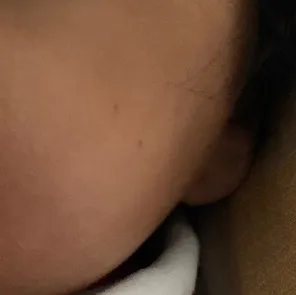![POOJA KOTHARI profile image of POOJA KOTHARI]() POOJA KOTHARIMom of a 8 yr 9 m old boy2 years ago
POOJA KOTHARIMom of a 8 yr 9 m old boy2 years agoA. White patches on a baby's skin can be caused by several factors, and it's essential to consider the specific characteristics of the patches and any associated symptoms. Some common causes of white patches on a baby's skin include:
1. **Milia**: Milia are small, white or yellowish bumps that can appear on a baby's face, especially on the cheeks and nose. They are typically caused by trapped skin flakes and dead skin cells and are harmless. Milia usually disappear on their own within a few weeks.
2. **Eczema**: Eczema, or atopic dermatitis, can cause dry, red, itchy patches on a baby's skin, which may also appear as white or lighter in color. These patches can occur on the cheeks and other parts of the body. Eczema is a common skin condition and may require treatment and moisturizing to manage.
3. **Birthmarks**: Some birthmarks, like nevus depigmentosus, can appear as white or lighter patches on the skin. These are typically harmless and don't require treatment.
4. **Fungal Infections**: Certain fungal infections, like tinea versicolor, can cause white or hypopigmented patches on the skin. These infections may need antifungal treatment.
5. **Vitiligo**: Vitiligo is a rare condition that can cause loss of skin color, resulting in white patches. While it can affect people of all ages, including babies, it's less common in infants. Consult a dermatologist if you suspect vitiligo.
6. **Sun Exposure**: Prolonged sun exposure can sometimes lead to the development of lighter or hypopigmented patches on the skin. It's important to protect your baby's skin from excessive sun exposure.
7. **Other Skin Conditions**: There are other rare skin conditions that can lead to white patches, and a dermatologist can provide a diagnosis and appropriate treatment if needed.
If you notice white patches on your baby's skin that are persistent, increasing in size, or causing any discomfort or concern, it's advisable to consult a pediatrician or dermatologist. They can examine the patches, provide a proper diagnosis, and recommend any necessary treatments or interventions. Keep in mind that some white patches may be benign and do not require treatment, while others may need attention to manage underlying skin conditions.





.svg)
.svg)
.png)




Post Answer